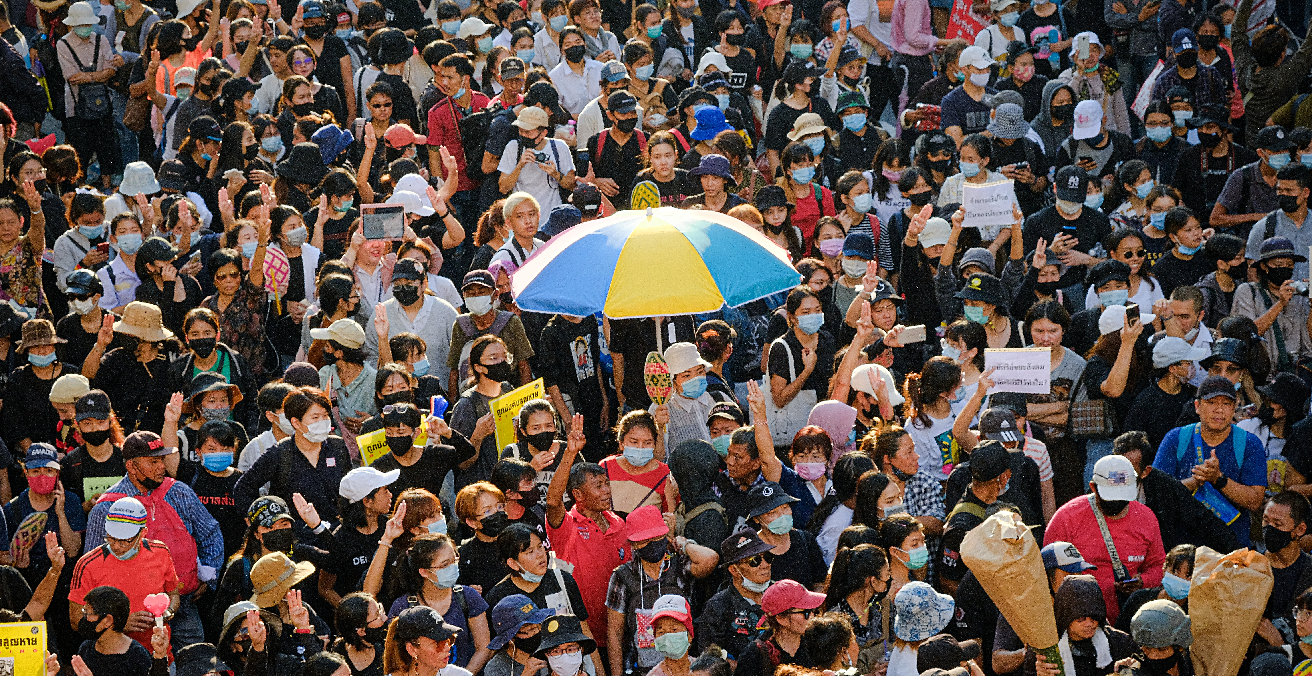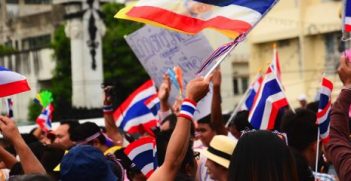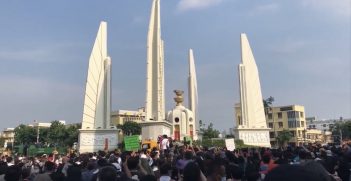Are The Thai Army’s Information Operations Self-Defeating?

Besides failing to achieve their political end, the Thai army’s Information Operations have emerged as another critical source of social division. This has subsequently generated deeper political mistrust in Thai society.
On 1 December 2020, Pannika Wanich, a former Future Forward Party MP and now a leader of the Progressive Movement, divulged more than 54,000 fake Twitter accounts operating in Thailand. Of these, it was revealed at least 17,562 are controlled by the Royal Thai Army’s 2nd Infantry Division, Queen Sirikit’s Guard, best known as the Eastern Tigers, which is headquartered in Prachin Buri province. In early October, Twitter took down at least 926 fake Twitter accounts linked to the Royal Thai Army (RTA). According to Twitter’s investigation, those fake accounts “were engaging in amplifying pro-RTA and pro-government content, as well as engaging in behaviour targeting prominent political opposition figures.” Thailand’s domestic political confrontations between the youth-led pro-democracy movement and the government have steadily intensified since February 2020. Upon uncovering the RTA’s role in information warfare against the protesters, the RTA came under fierce criticism by the public, civil society organisations, and the opposition, tarnishing the image of the Thai military even further.
The role of the RTA in the controversial information warfare is nothing new. In late February 2020, during the censure debate against Prime Minister and Minister of Defense Prayut Chan-o-cha, Wiroj Lakkhanaadisorn, the current Move Forward Party MP, also brought a case of the RTA’s controversial Information Operations (IOs) into the spotlight. According to a document leaked on 25 February, it was revealed the RTA’s Internal Security Operation Command (ISOC) played a critical role in funding and conducting cyber warfare against activists, politicians, and academics working to promote the peace process in the three southern border provinces of Pattani, Yala, and Narathiwat, where violence has erupted since 2004. Prime Minister Prayut bluntly denied any involvement of the army’s information warfare unit in the southern provinces. The ISOC’s spokesman, Major General Thanathip Sawangsaeng, acknowledged the leaked document was authentic, but denied the existence of IOs.
While IOs can be defined in several ways, their core purpose is to interfere in channels of communication, manipulate information trusted by the opponents without their knowledge, and shape their perceptions so that they will make decisions against their own interests. According to the leaked documents, the Thai army’s IOs have clear objectives to shape opinions and change political tendencies of the public. They utilise thousands of fake Twitter accounts to frame, disqualify, and destroy the political legitimacy of the civil society organisations, activists, and youths organising protests against the government. Political timelines and statistics, however, have clearly indicated the Thai army’s IOs failed. From February to mid-August 2020, according to Thai Lawyers for Human Rights (TLHR), youths and activists organised at least 107 protests and public gatherings in 52 provinces. Several other protests took place in the following months, while the last major protest was on 2 December. More importantly, the protests have increased not only in frequency and scale, but have also extended to several interest groups, including LGBT groups, artist groups, high school students, and academics.
Information warfare is not effective unless and until it can engage and interact with the masses. But public interactions and engagements are possible only if the campaign is popular. Unfortunately, that is not the case in the Thai army’s IOs. Most of the Thai army-linked fake Twitter accounts, which were created in December 2019 and February 2020, are relatively new and have no historical records of engagements and interactions, such as chats, comments, and likes. Without engagements and interactions, those fake accounts had very few or no followers. 89.37 percent of the tweets by the Thai army’s IOs, as the report indicated, had zero engagement, while 97.41 percent had only a few engagements. With this regard, it is clear the Thai army’s IOs did not achieve their political objective to shape opinions and change political tendencies of the public.
Besides failing to achieve their political end, the Thai army’s IOs have emerged as another critical source of social division which has subsequently generated deeper political mistrust in Thai society. In the 16 years since the re-emergence of political and security instability in the three southernmost provinces of Thailand in 2004, nearly 7,000 people have died, while more than 12,000 have been wounded. The peace negotiations have been on and off, while the violence continues. The failure of the peace process resulted partly from the climate of political mistrust driven largely by the dissemination of disinformation and hate speech on social media. The concrete evidence presented by opposition MP Wiroj Lakkhanaadisorn clearly indicated that the Thai army’s cyber warfare has done more harm than good.
In addition to violence in the south, Thailand has been in political crisis since the Thai army staged a military coup to topple the democratically elected government of Prime Minister Yingluck Shinawatra in May 2014. Even though Thailand managed to hold a general election in March 2019, the military-dominated government has not been able to get a grip of the ongoing political crisis. Bringing the country out of the current crisis requires sincere political willingness, honest negotiations, and mutual concessions between the government and the opposition. As Columbia University’s senior research scholar Jason Healey and professor of international politics Robert Jervis argued, in the time of serious political crisis, cyber capabilities offer “greater opportunities for provocation, misperception, mistake, and miscalculation.” The Thai army’s IOs have proved to be a self-defeating strategy.
As Thailand faces the issues of constitutional amendment, democracy, human rights violations, media freedom, educational reforms, and economic turndown driven by the COVID-19 pandemic, protests are expected to continue in 2021. It is still possible for Thailand to find a political resolution to bring the country out of crisis. The political exit, however, is realistic only if the government expresses its sincere political willingness and builds mutual trust with protesters and the opposition rather than conducting IO.
Sek Sophal holds a Master degree in Asia Pacific Studies from Ritsumeikan Asia Pacific University. He is a researcher at the Center for Democracy Promotion, Ritsumeikan Center for Asia Pacific Studies, at Ritsumeikan Asia Pacific University, and a guest columnist at the Bangkok Post and Southeast Asia Globe.
This article is published under a Creative Commons Licence and may be republished with attribution.





